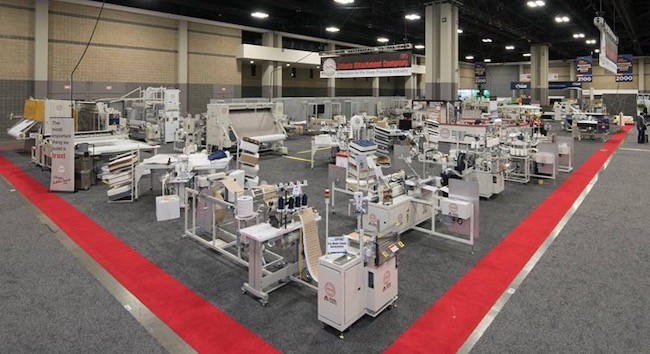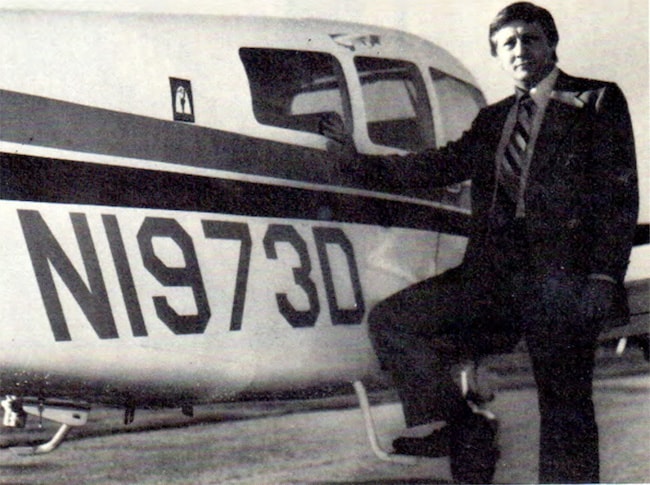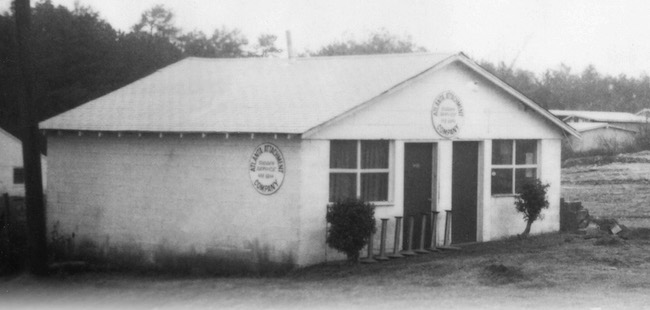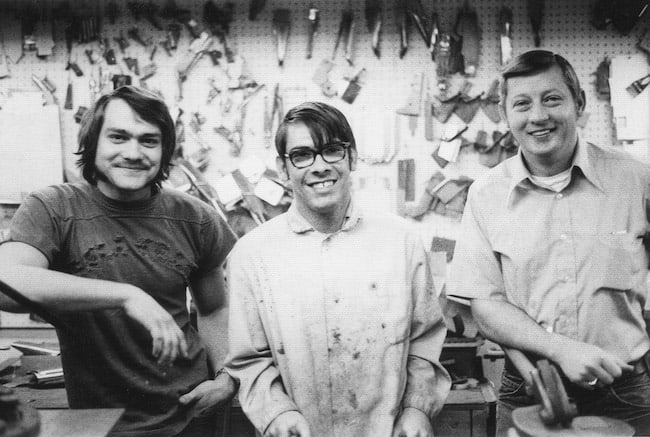Atlanta Attachment Co. has grown from a small machinery company to a leader in automated equipment for a variety of industries. Regardless how the Lawrenceville, Georgia-based business has grown, it’s never lost sight of its roots and values

Hank Little joined Atlanta Attachment Co. in 2003 as vice president of sales and was named president in 2006.
In 50 years, Atlanta Attachment Co. has grown from a tiny business operating in a home basement to a manufacturer of automated and custom systems, machinery, equipment and parts serving a half-dozen industries in more than 75 countries.
Yet midway through its history, it wasn’t clear that the company would survive at all.
What kept Atlanta Attachment afloat then and what has led to its growth since are a “we’re all in this together” mindset and a fearlessness when it comes to change. Both attitudes are exhibited companywide, from the senior leadership team to the factory floor workers, says Hank Little, who joined the Lawrence-ville, Georgia-based company as vice president of sales in 2003 and was named president in 2006.
“We still maintain a good family business atmosphere and work together as a team,” Little says. “That tone was set by (founder) Elvin (C. Price). Everyone genuinely cares about the success of the business. It sounds corny, but we’re a very open company. Everyone here knows what we’re doing and why we’re doing it. Over the years, we’ve learned to adapt to market changes. We’re not scared to try new things, so we can stay competitive.”
Problem, meet solution
AAC got its start as many companies do: Elvin C. Price saw a problem that needed fixing and decided he was the one to do it. In this case, Price was sweeping floors after school in a sewing factory in South Carolina when he noticed that the machine operators had trouble controlling the fabric and turning out consistent products. Price started fashioning machine attachments from scrap metal, giving them away to factory workers for free. That eventually led to a job as a sewing machine technician in Atlanta, but Price was frustrated by some of the inferior products his employer offered customers. He knew he could do better and, in 1969, started the company that would become AAC in his home basement.
For its first 25 years, AAC hummed along nicely as a manufacturer and servicer of sewing machines and other equipment for the apparel industry. By 1990, it was operating in an 80,000-square-foot facility in Lawrenceville and, by 1994, had more than 200 employees. But the North American Free Trade Agreement, which took effect in 1994, scuttled its trajectory. In a few short years, U.S. apparel manufacturers started closing domestic factories until few remained.
“At the time, we were nearly 100% in the apparel industry,” Little says. “What were we going to do?”
Diversifying was one answer. Around 1999, AAC was approached by a company that had heard of its machining capabilities and asked if AAC could build a mattress handle machine. Intrigued by possible opportunities in the bedding industry, AAC executives visited the International Sleep Products Association’s biennial ISPA EXPO in 2000 and then exhibited a handful of machines at the 2002 show.

AAC opened its current headquarters and production facility in 2007. The building was designed with cost-savings and environmental sustainability in mind.
The mattress industry became the largest segment of AAC’s business and ushered in a new period of growth. In 2007, the company celebrated the opening of a new 200,000-square-foot headquarters and production facility spacious enough to fabricate the large pieces of mattress machinery that had become a significant part of its business. “We wanted to make a statement to the mattress industry that we were committed to it,” Little says. The building was designed with a number of environmentally responsible features that also made it more cost-effective than AAC’s previous facilities. In 2016, AAC added an annex, bringing the total square footage at its Lawrenceville location to 250,000 square feet.
But AAC never forgot the lesson about diversification it learned when the domestic apparel industry collapsed. Today, in addition to the mattress and furniture industries, it services automotive, aviation, carpet, contract manufacturing and even still some apparel makers. The company’s 138 employees are cross-trained to work with customers across all those industries.
Little says the Great Recession taught AAC another valuable lesson: Expand not only the industries you service, but also the regions you reach. Today, the company has customers in more than 75 countries and has exhibited at trade shows in China, Germany, India, Italy, Turkey and Japan, as well as the United States.
“After NAFTA, we had to reinvent the company and, then in 2008, when the economy declined, we had to expand the markets we serve and the regions we serve,” Little says. “We’re not tied to any one industry. While bedding is the biggest part of what we do, we’re in many other industries, as well.”
“A challenge is an opportunity”

“From the development point of view, we’re constantly faced with the necessity to develop more sophisticated machinery,” Little says. “We continue to reinvest in R&D to develop new products, new ways to manufacture and new ways to put products together.”
Adding to the complexity in bedding are the industry’s rapid changes in terms of mattress constructions and production requirements. “I’d say machine lifespans have been shortened by at least one-third since I started in the business (in 2003),” Little says. It’s not that machines don’t last as long as before, it’s that mattress manufacturers demand new capabilities, he explains.
“A challenge is an opportunity because it drives innovation,” Little says. “We try to stay open-minded and find new ways of looking at things.”
To address many mattress manufacturers’ needs, AAC unveiled a host of new machines at Interzum Cologne in Cologne, Germany, in May. They included the Industry 4.0 Shop Floor Control System, a suite of software-based tools that track, schedule and report on manufacturing processes; and the 1406C Mattress Packaging with Compression machine, which uses heavy-duty hydraulic platens to compress and then wrap beds even 14 inches thick.
Operating in a number of different geographic markets, AAC also must adjust to their varying needs. “A bed in the U.S. is very different from a bed made in the U.K. or in Mexico,” Little says. “We have to build modular machines so we have flexibility. We also have to build equipment that can be broken down and shipped by container around the world. All of those considerations go into the design process.”
“Sudden Service”
Early in the company’s history, Price adopted a motto of “Sudden Service” and it has remained a guiding principle for AAC.

Since first showing just seven machines at ISPA EXPO 2002, AAC has been a regular exhibitor at the International Sleep Products Association’s biennial show.
Little points to strong customer service as one of three columns upon which the company rests when distinguishing itself from competitors; the other two columns — R&D and a strong technical staff — are linked to customer service, too.
“We’re investing in future research and development to serve our customers so they stay competitive, and we have a strong technical staff. That’s becoming more and more important today,” Little says. For instance, he explains, “fewer and fewer people understand ‘Stitchology 101’ or sewing machines in general, so we do a lot of teaching about sewing.”
The Atlanta Parts Depot, opened in 2006, also helps service customers by supplying expendable replacement parts for AAC machinery (for as long as 10 years after a machine has been discontinued), as well as parts for equipment made by other brands. The parts segment has grown to be a “nice portion of what we do,” Little says.
New ownership for the next era
As Little noted, among its employees, AAC continues to cultivate the feeling of a family-run business, although Price retired in 2016 and sold the company to HSM in Hickory, North Carolina, which operates AAC as an independent division.
“The ownership transition has been good,” Little says. “HSM has a highly diversified portfolio, such as their transportation division and foam fabrication unit, and that’s opened up some new market opportunities for us.”
But the “biggest change is the fact that there’s been little change at AAC,” Little adds. “They like what we’ve been doing and asked us to keep doing it.” A few AAC employees retired around the time of the sale, but the senior management team largely stayed in place, he says. One retiree, Ronnie Ford, longtime AAC chief financial officer and chief operating officer, now serves on the HSM board.
Keeping a consistent team was important to Ford, Price and Little as they negotiated the sale.
“We asked, ‘What’s going to change?’ Without our employees we’re nothing. We were worried about our employees,” Little says. “(HSM) told us they thought they were buying a successful business and would be here to help.” AAC continues to be managed as it was prior to the sale, according to both AAC and HSM.
AAC’s lack of employee turnover is a point of pride for Little. “We are a close-knit company. That’s why I use the term family,” he says. “As president, I have an open-door policy. I want everyone to feel like they can come talk to me.”
The company continues to invest in its workforce, including paying for education. “If anyone wants to learn more, we’ll pay for position-related classes as long as they make a C or better,” Little says. “We always encourage people to continue their education and want to offer advancement opportunities for people inside the company.”
The next 25 years
As Little reflects on the company’s golden anniversary, he’s already looking ahead.
“It’s a big responsibility from where I sit. We’ve got 138 employees and their families to take care of and a 50-year history to honor,” he says. “I want to grow this business and keep it strong and healthy so we can make it to the next milestone of 75 years.”
Major Milestones Over 5 Decades
From moving into its first building to securing its first patent, Lawrenceville, Georgia-based Atlanta Attachment Co. has celebrated a number of milestones during its first 50 years as manufacturer of automated and custom systems, machinery, equipment and parts for a variety of industries. Here are some of the highlights from its first five decades. Read more about AAC’s history at the Atlanta Attachment website.
1969
Elvin C. Price starts what will become Atlanta Attachment Co. in the basement of his home in Atlanta
1971
- Company moves to its first building in Doraville, Georgia
- Price buys a company plane to make his promise of “Sudden Service” even faster
- Price hires Joey Bottoms and Travis Paul to help build products

The company bought a plane to make Price’s promise of “Sudden Service” even faster. It also was a natural fit for a company that eventually moved into the aviation sector.
1978
- Construction starts on a 10,000-square-foot headquarters and plant in
Lawrenceville, Georgia
1983
- Company unveils automated equipment for the apparel industry at the Bobbin Show
1991
- AAC secures its first patent
1994
- Company grows to more than 200 employees
- Facility expands to 115,000 square feet
1996
- Company launches its first website
1998
- AAC releases its Serial Bus Control System, a four-wire system with modules to manage functions of automating equipment
2002
- AAC shows seven machines at its first ISPA EXPO
2006
- AAC establishes Atlanta Parts Depot
2007
- AAC moves into its current facility with opening of the 200,000-square-foot building
2016
- HSM purchases AAC
- Price retires
- AAC adds annex, bringing total square footage to 250,000
2019
- AAC celebrates 50th anniversary
Long-Time Employees Had Opportunity to Grow, Succeed
When asked by BedTimes, “What factors have contributed to Atlanta Attachment Co.’s success and longevity?” President Hank Little concluded his answer with this: “I want to make sure it’s clear that without our employees we would not have made it 50 years. We have dedicated employees who are good at what they do.”
Little points to a companywide policy of open communication, a sense of camaraderie among employees and a corporate commitment to helping team members grow as reasons the company has a dedicated workforce and low turnover.
We asked a few longtime employees about their careers at AAC and why they’ve stayed with the company for so long. (Answers have been lightly edited for style, clarity and length.)
Brenda Chavis, production planning and job costing
When were you hired? “I started working for AAC in October 1983 in a clerical position in the drafting department, which consisted of four manual drawing boards. I maintained the print mylars, assigning part numbers to prints and reviewing bills of materials.”
What drew you to the company? “I had several friends who worked near AAC who spoke highly of the company, giving them rave reviews.”
How has your career at AAC progressed? “I’ve done several things throughout the company, from drafting clerical to billing to receiving. I’ve spent the most time in production planning, which led me to the position I am in now.”
What have you enjoyed most about your years at AAC? “The people here at Atlanta Attachment. They care about the quality of their work and the satisfaction of the customers. Management shows great concern for the well-being of their employees. AAC has taken good care of me over the years and, if I had to do it all again, I wouldn’t change a thing.”
William Richey, vice president of customer service
and inside sales
Hired in 1981 as metal fabricator: “Within a year, the pay increased, along with the available hours I could work, and I was working in a heated and air-conditioned building. I had found a home, which to me was a big hobby shop environment for my mechanical passion and I could utilize my talents.”
How has AAC changed during your time there? “Our products and the services are not the same today, and I cannot say that we have ever feared change because we prepared, embraced and managed that change. Mr. (Elvin C.) Price, our founder, surrounded himself with talented individuals and it is clear that this was a key item in our success. I say ‘our’ because the opportunity I was given 38 years ago has been fruitful, not only financially … but, most importantly, personally, as I am part of the success everyone at AAC enjoys today.”
What have you enjoyed most about your years at AAC? “All my years at AAC have been enjoyable because I like my job — helping and sharing my talents, as well as learning from others.”
Farrell Wilkins, chief operating officer
When were you hired? “I started working in January 1992 as an electronic assembler producing cables and control boxes.”
What drew you to the company? “I had relatives working at Atlanta Attachment that encouraged me to apply.”
How has your career at AAC progressed? “My progression into new roles: electronic assembler, sub-assembly, sub-assembly supervisor, mechanical assembly supervisor, folder department supervisor, planning and procurement manager, vice president of planning and procurement, and now COO. Over the years, Elvin Price and the management team at Atlanta Attachment Co. challenged me and put me in different positions. I consider myself blessed to be part of a company that has given me many opportunities to grow.”
How has AAC changed during your time there? “When I started, the company was just beginning to deal with automated equipment in the apparel industry used in the U.S. market. Now we are a company that has evolved into one that is known worldwide for manufacturing automated equipment used in several industries, including bedding, apparel, automotive, furniture and aviation.”
Two Long Histories of Success
It is no small feat to stay in business for decades. This autumn, BedTimes spotlights two companies celebrating major milestones in 2019: Atlanta Attachment Co., founded 50 years ago, is featured in this issue, and HSM, which is marking 75 years in business, will be highlighted in the October issue. For most of their histories, the companies operated separately, though, over time, HSM became a customer of AAC and, in 2016, HSM acquired AAC as a standalone division. The companies, which both began as family businesses, share similar origin stories and corporate values.







